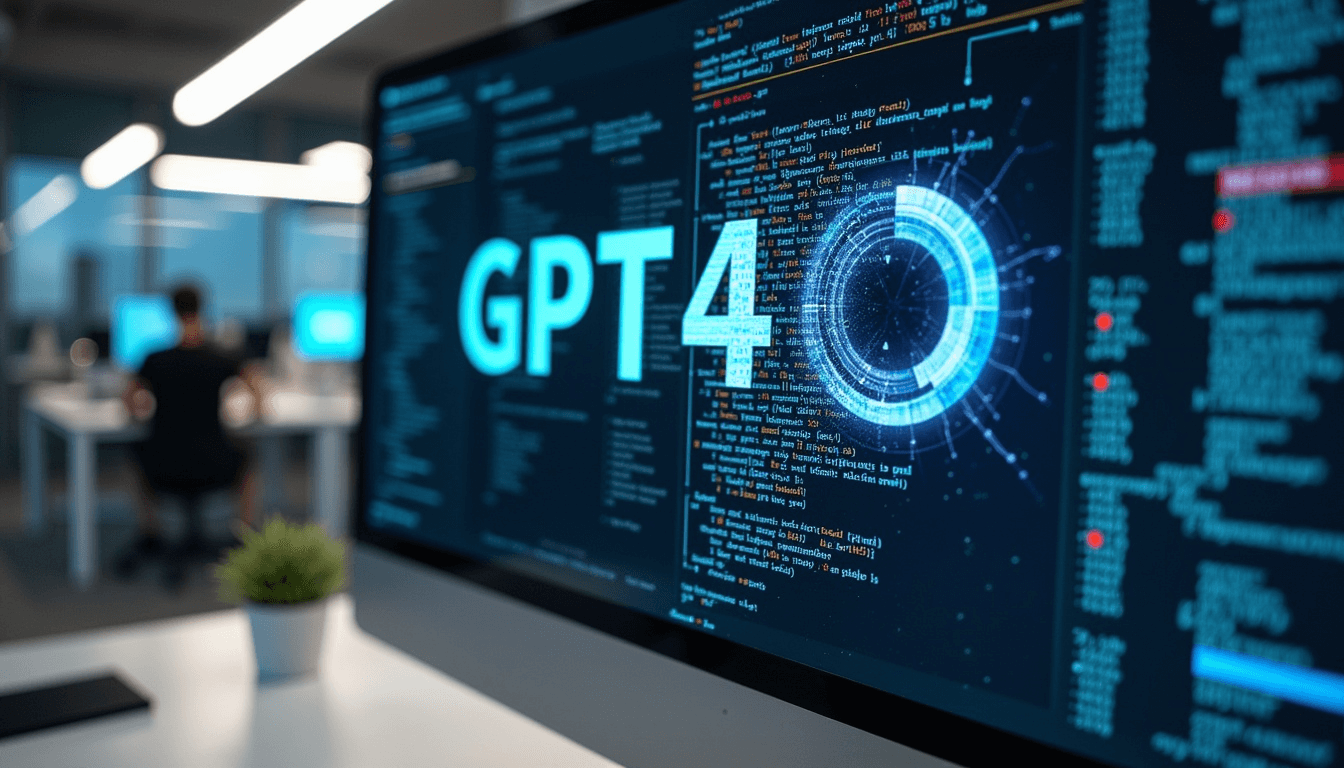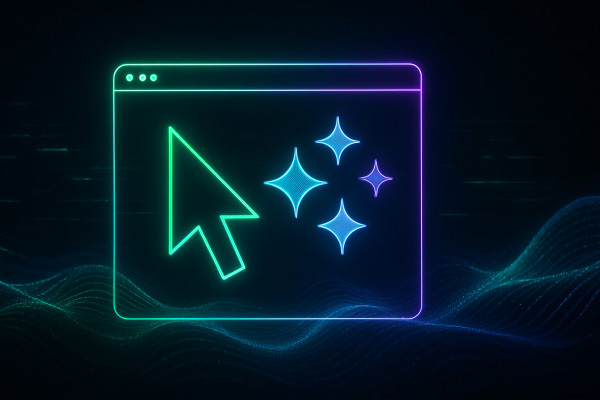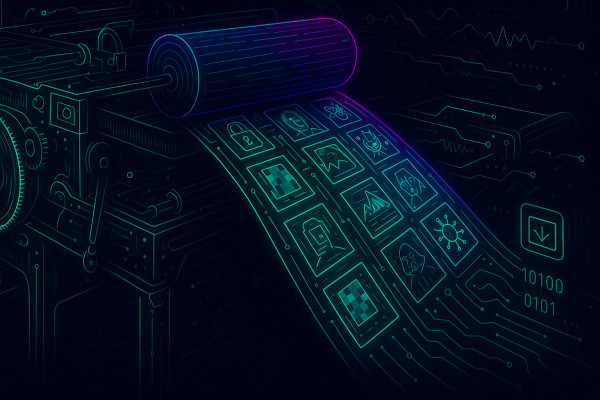Free AI tools for designers
May 9, 2025
AI is revolutionizing the design industry empowering designers with an array of powerful tools to streamline their workflows and enhance…
In the rapidly evolving landscape of artificial intelligence, OpenAI's GPT-4o has introduced a groundbreaking approach to image generation that fundamentally differs from previous technologies. While earlier AI image generators like DALL-E relied on diffusion models to create visuals, GPT-4o employs a native autoregressive approach that has transformed how AI generates images. This technological shift represents more than just an incremental improvement—it's a complete paradigm change that integrates image creation directly into the core architecture of large language models. By treating images as sequences of tokens similar to text, GPT-4o can generate visuals with unprecedented precision, contextual awareness, and text rendering capabilities. The implications of this architectural revolution extend beyond technical specifications, influencing everything from creative workflows to the future development of multimodal AI systems. This article explores how GPT-4o's autoregressive approach differs from traditional diffusion models, examining the technical innovations, practical advantages, and future implications of this remarkable advancement in AI image generation.

Before diving into GPT-4o's revolutionary approach, it's essential to understand how traditional diffusion models like DALL-E operate. Diffusion-based image generation follows a process inspired by thermodynamics, where an image is gradually constructed by reversing a carefully controlled noise-addition process. The model starts with pure noise—essentially static—and iteratively refines it into a coherent image by removing noise in small steps. This approach, pioneered by models like DALL-E, Midjourney, and Stable Diffusion, has dominated AI image generation for years.
The diffusion process works by training neural networks to predict and remove noise from increasingly degraded versions of images. During generation, the model begins with random noise and progressively denoises it according to text prompts or other conditioning information. This iterative refinement happens simultaneously across the entire image canvas, with each pixel being processed in parallel rather than sequentially. While this parallel processing offers speed advantages, it comes with significant limitations.
One of the most noticeable shortcomings of diffusion models is their struggle with text rendering. Anyone who has used DALL-E or similar systems has likely encountered the infamous "gibberish text" problem—where words appear visually similar to real text but contain nonsensical characters or spellings. This occurs because diffusion models lack the sequential understanding necessary for coherent text generation. Additionally, diffusion models often struggle with maintaining global coherence across complex scenes, following detailed instructions, and integrating contextual information from conversations. These limitations stem from the fundamental architecture of diffusion models, which operate as specialized image-generation systems largely separate from the language understanding components of AI.
GPT-4o represents a fundamental shift in how AI generates images by employing an autoregressive approach rather than diffusion. Unlike diffusion models that generate the entire image simultaneously through noise reduction, GPT-4o builds images sequentially, token by token, similar to how it generates text. This architectural change integrates image generation directly into the core of the language model rather than treating it as a separate specialized component.
The autoregressive approach treats images as sequences of visual tokens that are predicted one after another. Each new token is generated based on all previously generated tokens, allowing the model to maintain context and coherence throughout the creation process. Rather than generating individual pixels, GPT-4o likely employs a hierarchical method similar to Visual Autoregressive Modeling (VAR), which generates images through "next-scale prediction"—starting with a low-resolution framework and progressively adding finer details.
This integration of visual and linguistic understanding within a unified architecture represents perhaps the most significant innovation. By processing and generating both text and images using the same fundamental transformer architecture, GPT-4o can maintain context across modalities and better interpret complex prompts. The model can leverage its extensive world knowledge and reasoning capabilities when generating images, resulting in visuals that are not just aesthetically pleasing but contextually appropriate and conceptually accurate.
The rollout of GPT-4o's image generation capabilities to all users marked a pivotal moment in AI history, demonstrating OpenAI's confidence in this new approach. The autoregressive method also enables entirely new interaction patterns, such as iterative refinement through conversation and the ability to blend textual and visual elements in more sophisticated ways than previously possible. Users can guide the image creation process through natural language, harnessing everything GPT-4o understands about the world to create precisely what they envision.
The autoregressive approach employed by GPT-4o offers several significant technical advantages over traditional diffusion models. Perhaps the most immediately noticeable improvement is in text rendering within images. Where diffusion models notoriously struggle with coherent text, GPT-4o excels at generating readable, contextually appropriate text in images. This capability stems from the model's sequential generation process, which mirrors how it handles text tokens in language generation. By treating text within images as a natural extension of its language capabilities, GPT-4o can maintain linguistic coherence whether generating paragraphs of prose or text on a storefront sign in an image.
Global coherence represents another major advantage of the autoregressive approach. Since GPT-4o generates content sequentially with each new element informed by everything that came before, it maintains consistency throughout complex scenes. This results in fewer logical inconsistencies in spatial relationships, lighting, and conceptual elements. The model's unified architecture also enables it to leverage its extensive world knowledge when generating images, resulting in visuals that demonstrate a deeper understanding of concepts, cultural references, and real-world objects.
The integration with GPT-4o's language model creates a seamless multimodal experience where text and image generation flow together naturally. This architectural unity allows for more intuitive interactions, where users can refine images through conversation, building on previous context rather than starting from scratch with each generation. The model can incorporate feedback at specific points in the generation process, enabling more interactive and refined image creation that responds dynamically to user input.
However, these advantages come with computational costs. As Sam Altman noted, the autoregressive approach is significantly more resource-intensive than diffusion models, leading to temporary rate limits as OpenAI worked to optimize the system. This computational intensity reflects the fundamental trade-off of the approach—sequential generation provides greater coherence and control but requires more processing power than parallel methods. Despite these challenges, the quality improvements have proven worth the computational investment, with users overwhelmingly embracing the new capabilities despite the initial limitations.
The release of GPT-4o's image generation capabilities triggered an unprecedented wave of adoption and creativity across the internet. Within hours of the feature's rollout to free users, social media platforms were flooded with AI-generated images in a variety of styles, most notably the viral trend of Ghibli-style character renditions. This phenomenon demonstrated not just the technical capabilities of the system but its cultural impact, as millions of users discovered new ways to express themselves visually through AI.
The viral adoption wasn't merely about quantity—it reflected a qualitative shift in how people interact with AI image generation. As Sam Altman noted, OpenAI added one million users in a single hour following the release, a testament to both the accessibility and appeal of the new approach. The integration of image generation directly into the ChatGPT interface, powered by the same model that handles text conversations, created a seamless experience that lowered barriers to entry for creative expression.
Beyond the initial wave of enthusiasm, GPT-4o's autoregressive approach has enabled practical applications that were previously challenging or impossible with diffusion models. Designers have begun using the system to rapidly prototype concepts, leveraging its ability to understand and implement detailed instructions. Educators are creating custom visual materials that incorporate accurate text and diagrams, while content creators are developing consistent visual narratives across multiple images.
The workflow implications are particularly significant. As explored in the video above, complex processes that previously required specialized tools like ComfyUI, Figma, or Photoshop are now collapsing into simple conversational prompts. Users can request modifications, iterations, and variations through natural language, maintaining context across multiple generations. The ability to reference and build upon previously generated images creates a more intuitive creative process that mirrors human collaboration rather than technical tool manipulation.
Perhaps most importantly, GPT-4o's approach has democratized sophisticated image creation. Tasks that once required specialized knowledge of prompt engineering or technical parameters are now accessible through conversational interfaces. The model's ability to understand intent rather than just explicit instructions means that users can express what they want in natural language and receive results that match their vision, regardless of their technical expertise.
The shift from diffusion to autoregressive image generation in GPT-4o represents more than just a technical improvement—it signals a fundamental change in how AI will approach visual content creation in the future. As this technology continues to evolve, we can expect several significant developments that will further transform the landscape of AI-generated imagery.
First, the integration of image generation directly into large language models points toward a future of truly unified multimodal AI systems. Rather than specialized models for different modalities, we're moving toward general-purpose AI that can seamlessly work across text, images, audio, and eventually video. This convergence will likely accelerate with future models, creating increasingly natural interactions between humans and AI across all forms of media.
The computational challenges highlighted by GPT-4o's initial release—with Sam Altman noting that "our GPUs are melting"—will drive innovation in hardware and optimization techniques. As autoregressive approaches become more efficient, we can expect faster generation times and higher resolution outputs without sacrificing the quality advantages of sequential generation. This optimization will be crucial for scaling these capabilities to more users and more complex applications.
Perhaps most intriguingly, the autoregressive approach may eventually extend to video generation. The same principles that allow GPT-4o to create coherent images token by token could potentially be applied to generating video frames in sequence, maintaining narrative and visual consistency throughout. Early experiments with tools like Sora already hint at this possibility, suggesting that the architectural innovations in GPT-4o may be laying the groundwork for the next revolution in AI-generated media.
The democratization of creative tools will likely continue as well, with increasingly sophisticated capabilities becoming accessible through simple conversational interfaces. As these systems improve, the distinction between professional and amateur content creation tools may blur, creating new opportunities for creative expression while also raising important questions about the future of creative professions and the nature of human creativity in an AI-augmented world.

May 9, 2025
AI is revolutionizing the design industry empowering designers with an array of powerful tools to streamline their workflows and enhance…

May 5, 2025
Optimizing images has become a necessity for web developers and content creators alike With the rise of high-resolution displays and…

May 4, 2025
Freepik the popular design asset marketplace has recently unveiled F Lite an 'open' AI image generator trained on licensed data…